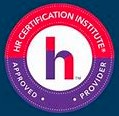Get a Head Start on OSHA Requirements for COVID-19 Protection
Duration : 90 Minutes

This course, has been approved for 1.5 HR (General) recertification credit hours toward aPHR™, PHR®, PHRca®, SPHR®, GPHR®, PHRi™ and SPHRi™ recertification through HR Certification Institute® (HRCI®).
William A. Levinson,
William Levinson is the principal of Levinson Productivity Systems, P.C. He is an ASQ Fellow, Certified Quality Engineer, Quality Auditor, Quality Manager, Reliability Engineer, and Six Sigma Black Belt. He holds degrees in chemistry and chemical engineering from Penn State and Cornell Universitie Read more
This webinar's purpose is to give attendees' organizations a head start on a probable OSHA standard for protection of workers from COVID-19 and related diseases in the workplace. It builds on an existing OSHA publication along with actions that are already being taken by workplaces to protect employees and customers, and maintain continuity of operations.
Course Objectives:
Attendees will learn actions that can be taken to get a head start on any ensuing OSHA regulations for COVID-19 prevention, and also to protect stakeholders and ensure continuity of operations.
Why Shoould You Attend:
The HEROES Act (Health and Economic Recovery Omnibus Emergency Solutions Act) requires, “Not later than 24 months after the date of enactment of this Act, the Secretary of Labor shall, pursuant to section 6 of the Occupational Safety and Health Act (29 U.S.C. 655), promulgate a final standard—(1) to protect employees” who are at occupational risk for exposure to SARS-CoV-2,” also known as COVID-19, “…from occupational exposure to infectious pathogens, including novel pathogens.” The legislation also requires the Department of Labor (OSHA) to develop a temporary standard within 7 days of enactment. This means organizations will almost certainly have to develop documented (written) programs to protect workers from COVID-19.
Even if the legislation does not pass, it is still highly desirable to protect our workers and other stakeholders (such as customers) from getting sick, and also ensure continuity of operations. As of mid-August 2020, in fact, coronavirus is making a comeback because people around the country are letting their guard down. This is similar to the mistakes that were made during the 1918 flu pandemic, when vigilance was relaxed before the influenza epidemic was fully eradicated. "The coronavirus threatens auto industry recovery as cases rise and more employees miss work" (CNBC, July 23 2020, https://www.cnbc.com/2020/07/23/coronavirus-threatens-auto-industry-recovery-as-cases-rise-and-more-employees-miss-work.html) warns, for example, that absenteeism of sick and exposed workers threatens continuity of operations at automotive plants. Other sources report that restaurants are being limited to 50% or even less of full capacity. People are meanwhile objecting to face masks despite their effectiveness (and with far less advanced materials than we have today) against the 1918 influenza.
OSHA's "Guidance on Preparing Workplaces for COVID-19" (the complete document is available at https://www.osha.gov/Publications/OSHA3990.pdf) fortunately gives us a good preview of what to expect, and so do actions that workplaces are already taking. This presentation will draw heavily on the OSHA publication for this purpose.
Course Outline:
1. Requirements of the HEROES Act; enactment will result in a new OSHA standard for COVID-19 prevention. Even if the HEROES Act does not pass, OSHA will hopefully issue a standard or regulation anyway. Even if it doesn't, "Guidance on Preparing Workplaces for COVID-19" offers outstanding guidance on what we can do to protect stakeholders and keep businesses running.
2. Planning principles
• The two primary hazards are contagion from (1) a cough and (2) contaminated surfaces, with the former being more important. (Countermeasures against a cough will work against ordinary speech and respiration, but not necessarily the other way around.)
• OSHA's "Guidance on Preparing Workplaces for COVID-19" defines jobs as very high, high, medium, and lower exposure risks. Most jobs (in physical workplaces, not telecommuting) fall into the medium risk category.
• Create a risk register of locations and activities that could expose people to COVID-19.
• Encourage participation by workers and other stakeholders who are often in the best position to notice potential risks.
• Hierarchy of controls, from most to least effective: (1) eliminate the hazard, (2) reduce the hazard, (3) engineering controls, (4) administrative controls, and (5) personal protective equipment (PPE)
3. Eliminate the hazard
• Telecommuting, distance education, and distance conferencing eliminate the hazard, along with costs associated with commuting and brick and mortar structures.
• Enormous monetary savings are available from abandoning, if possible, brick-and-mortar structures in large cities. This means, in other words, that the actions we have had to take to stop COVID-19 are likely to prove desirable even when and if the threat is gone.
4. Reduce the hazard
• Drive-up bank services and grocery pickup reduce risks enormously.
• If face-to-face interaction is desirable, office and conference space can be rented as needed.
5. Engineering controls
• Distance (between respiratory tracts) is our friend, and it can be increased with partitions and barriers without the need for more floor space per worker or customer. This means, for example, that restaurants should not have to remove half of their tables to reopen safely.
• Air handling systems can play a major role in suppressing contagion. ASHRAE offers extensive guidance on this.
6. Administrative controls
• Staggered shifts, and appointment-only visits to barbers and similar establishments, reduce the number of people present at any given time.
• One-way aisles can reduce opportunities for close contact.
• Attendance policies should discourage sick employees from coming to work instead of encouraging or even forcing them to do so.
7. Personal protective equipment (PPE)
• Almost any face mask is better than no face mask for personal protection against COVID-19. Improvised ones are, however, generally mediocre and also with a large amount of variation in the protection offered. Surgical masks that meet ASTM requirements are not only better, but there is far less variation in the protection offered.
• Respirators (e.g. N95) that meet NIOSH requirements offer the best protection, although they could remain in short supply for the next months.
• OSHA's "Guidance on Preparing Workplaces for COVID-19" implies that respirators are unlikely to be required for medium risk jobs, i.e. most jobs. If however OSHA or other regulations require respirators, than face masks (even surgical masks) are not adequate substitutes. The organization must also have a respiratory protection program that meets OSHA requirements; it is not enough to just make the respirators available.
• Beware of substandard and counterfeit PPE, especially counterfeit N95 and similar respirators.
Disclaimer; no part of this presentation constitutes formal engineering or occupational health and safety advice. The presentation gives links and references to authoritative sources (such as OSHA) whose specific guidance should be followed for this purpose.
What You Get:
• Training Materials including a copy of the slides and accompanying notes (pdf file)
• Live Q&A Session with our Expert
• Participation Certificate
• Access to Signup Community (Optional)
• Reward Points
Who Will Benefit:
• All people with responsibility for reopening businesses in the aftermath of the COVID-19 outbreak, as well as people with responsibility for occupational health and safety (OH&S) compliance along with building layouts and heating, ventilation, and air conditioning (HVAC).
Please reach us at 1-888-844-8963 for any further assistance or if you wish to register

100% MONEY BACK GUARANTEED
Refund / Cancellation policyGet In Touch
Similar Trainings
Understanding OSHA Lockout / Tagout (LOTO) Requirements
LIVE : Scheduled on
02-May-2024 :01:00 PM EDT
|
After the OSHA Inspection: What Do We Do Now? Effectively Handling OSHA’s Settlement Process
LIVE : Scheduled on
06-May-2024 :01:00 PM EDT
|
Get Ready for ISO's New Climate Requirements
LIVE : Scheduled on
06-June-2024 :01:00 PM EDT
|
